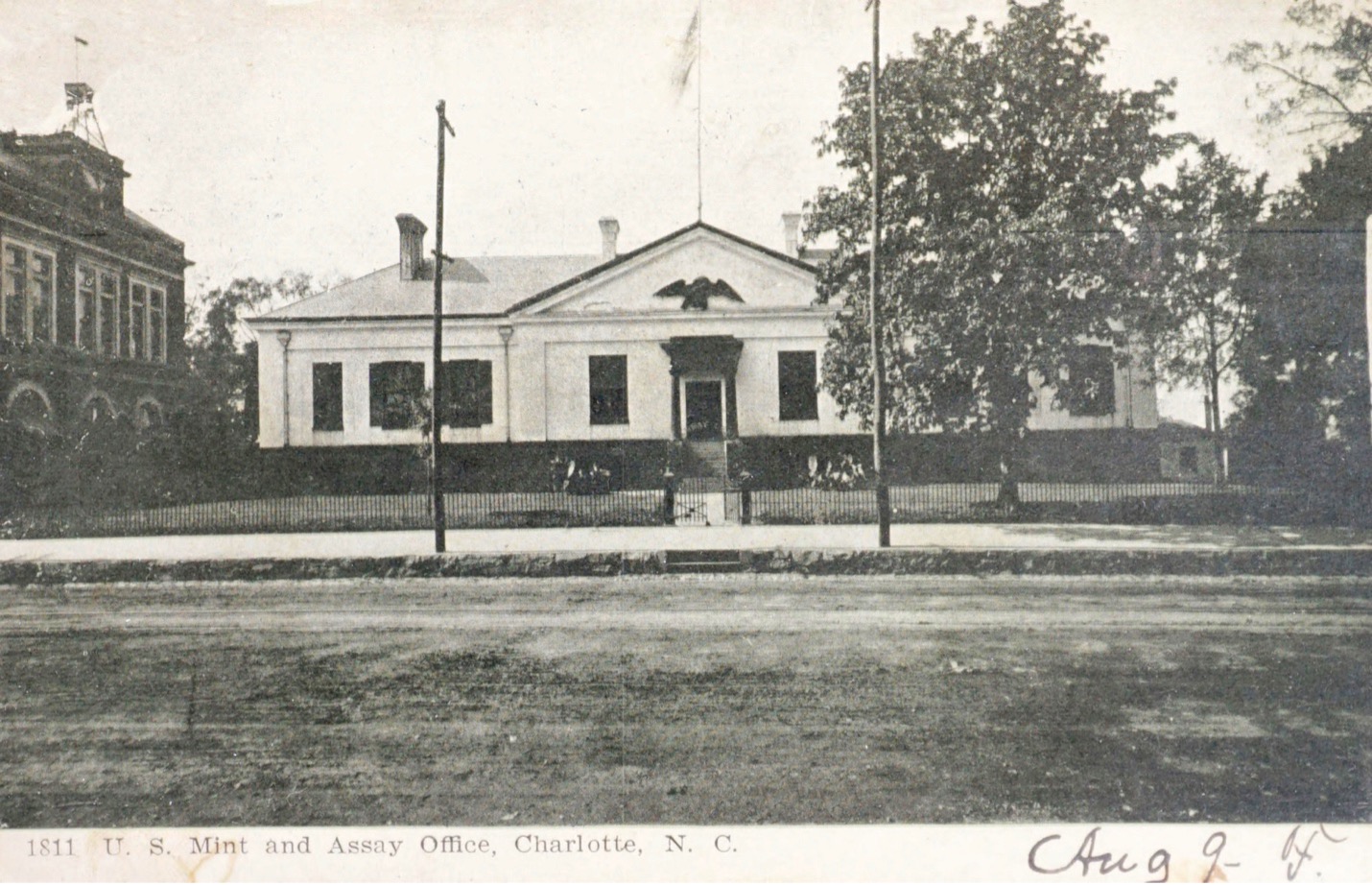When most people speak of the “Gold Rush” they are of course referring to the 1848 event that began at Sutter’s Mill in California leading to a frenzied rush the following year. However, this was not the first major discovery of the precious ore in the United States.
Gold was discovered in Mecklenberg County, North Carolina at the Reed Gold Mine in the late 1790’s. By the late 1820’s, miners, prospectors, schemers, saloon keepers, and a host of others had flocked to this remote part of North Carolina, all in the hopes of striking it rich. The gold that was extracted from the ground was bartered locally at first, traded so much for the ounce of dust or nuggets, but this arrangement was unsatisfactory to all since no one could be sure he was giving or getting a fair deal.
It became immediately obvious that some way had to be found to turn the local gold into some more familiar medium of exchange. Christopher Bechtler tried first, in 1831, and was followed thereafter by Templeton Reid, both private coiners who made good quality coinage for local consumption.
Transporting the gold to (at that time) the only U.S. Mint in Philadelphia was a long, expensive and very dangerous journey. The ride would have been by stagecoach, as practical railroads were still a decade or so away, and easy prey for highway robbers. The real need was for a proper United States Mint in the region, where miners and prospectors could bring their gold, receive a fair assay, and get coin of the realm in return for their hard-earned gold. North Carolina merchants and miners petitioned Congress for a branch mint in the region in 1831, but three years before the Treasury became involved in setting up a branch mint.

The Mint in Charlotte, North Carolina.
The Charlotte Mint was established by an Act of Congress passed on March 3, 1835. Included in the act was a provision for two other mints; at Dalonega, Georgia and New Orleans, Louisiana. The grand sum of $50,000 was appropriated to cover the expenses of purchasing a site and building an establishment suitable for a mint. In October 1835 a building contract was awarded to Perry & Ligon, of Raleigh, NC at a price of $29,800.00. Construction began in 1836 and the Mint opened for business in late July, 1837. The United States Branch Mint at Charlotte, as it was styled, was authorized to strike only gold coins – specifically quarter and half eagles, though in 1849, coinage of the small gold dollar also began. The reason for the restriction is easily understood, since the reason for starting a mint at Charlotte, North Carolina in the first place had everything to do with gold.
The Mint was in operation from 1838 until 1861, striking at various times all the gold denominations except Three Dollar Pieces, Eagles and Double Eagles. With the outbreak of the Civil War, the Confederacy seized the mint (along with the other two Southern mints at Dalonega and New Orleans) and after a brief period converted the facility into a hospital and military office space for the remainder of the Civil War.
Following the war, the building served as an assay office until 1913. During World War I, it housed a Red Cross station as well as the home of the Charlotte Women’s Club. In the early 1930s, a group of private citizens acquired the building from the U.S. Treasury Department, and relocated the structure a few miles east of downtown Charlotte. There it became the Mint Museum of Art, the first art museum in North Carolina. A complete collection of Charlotte gold coins are now displayed there.





